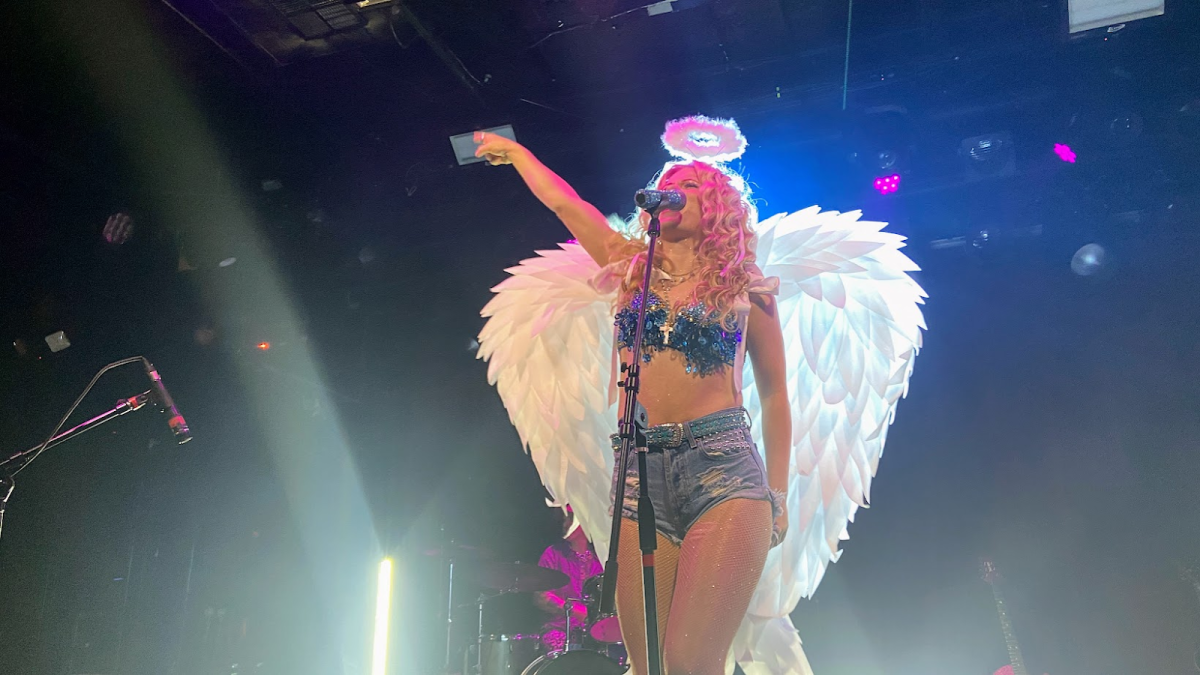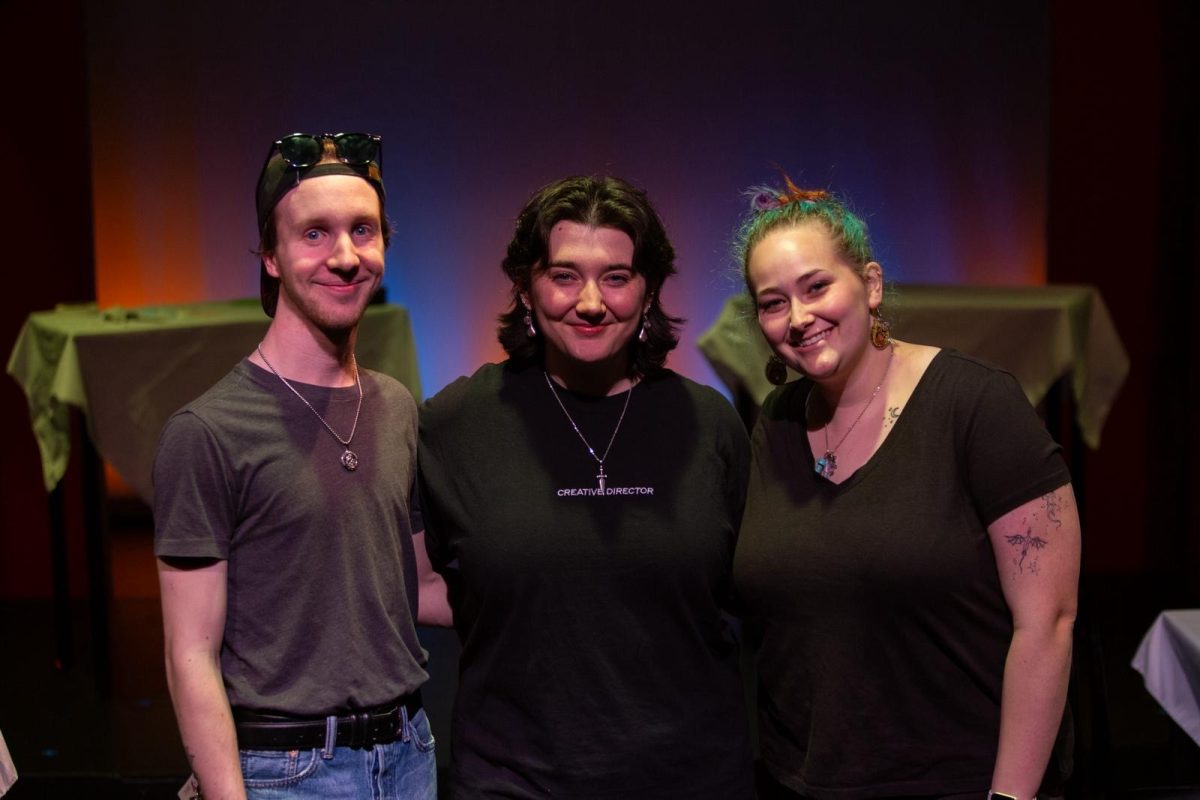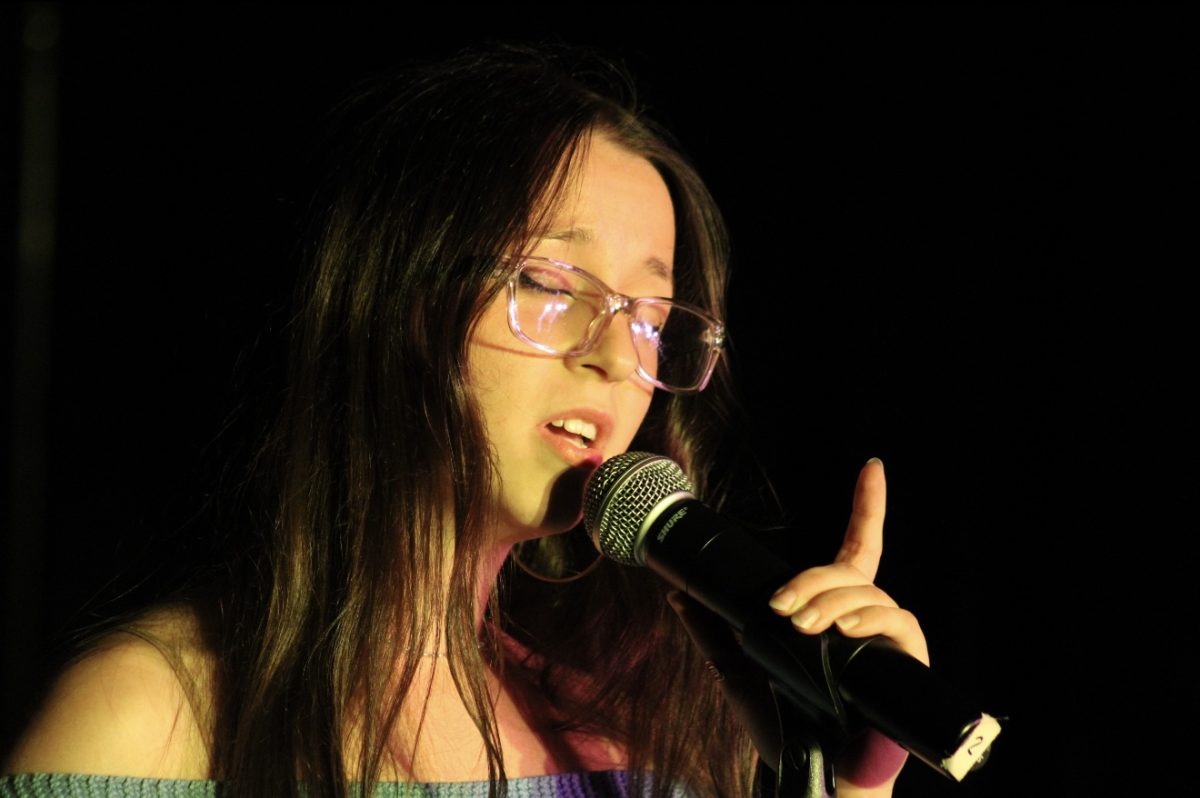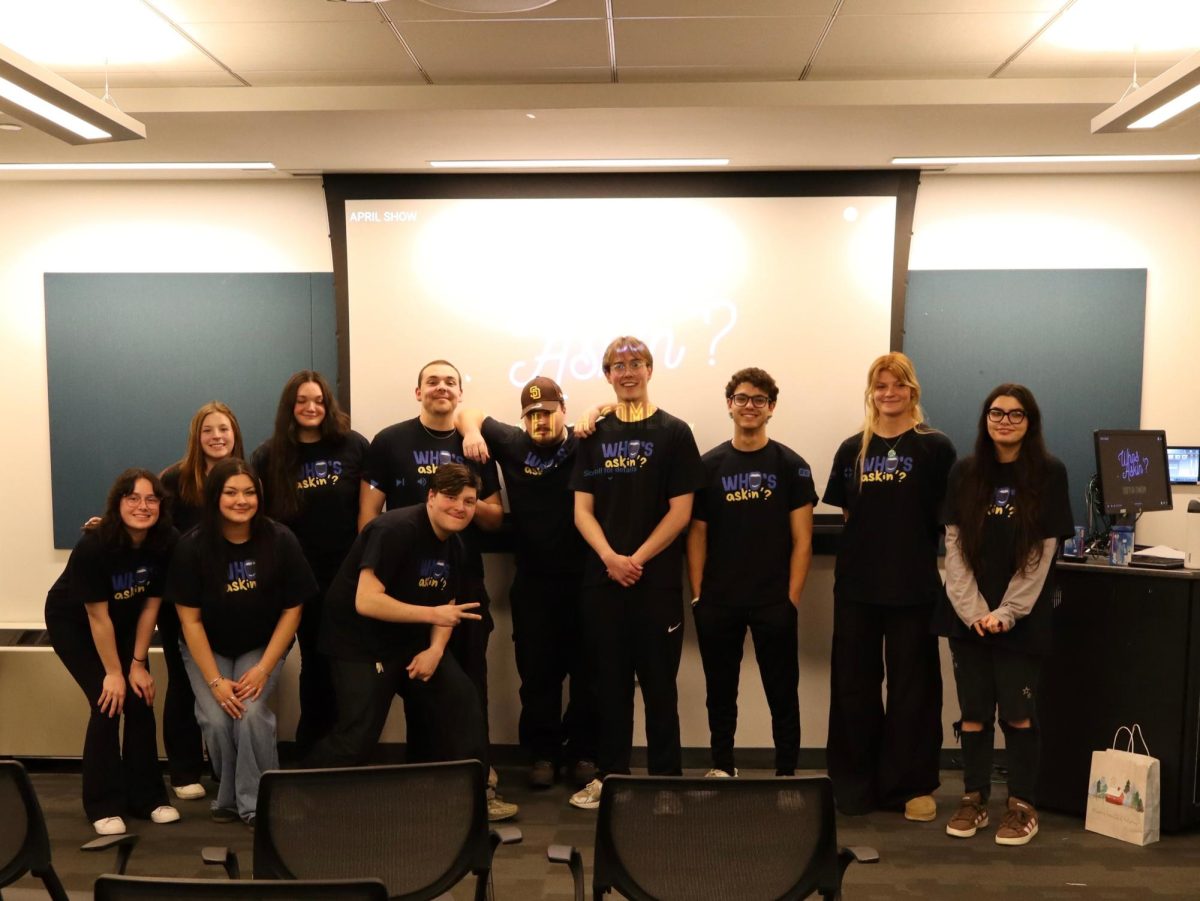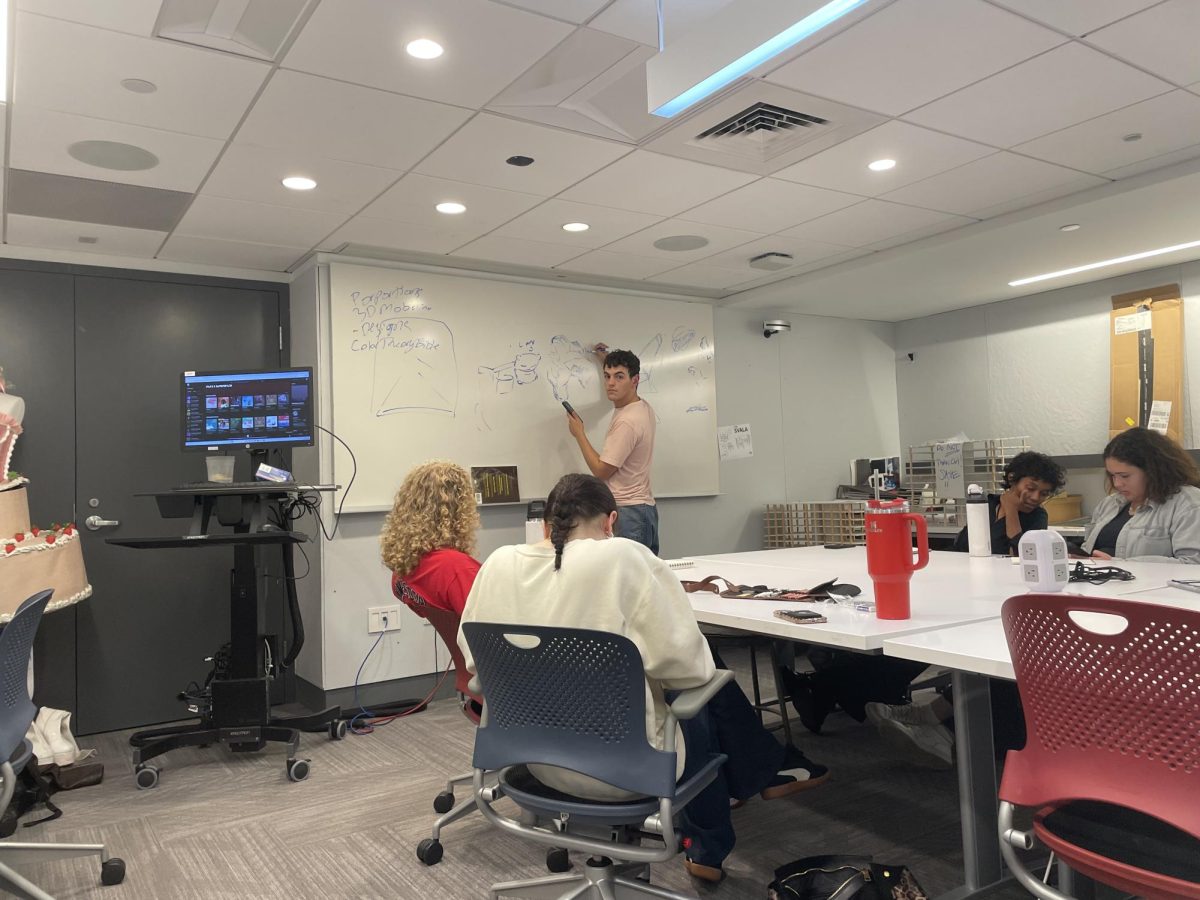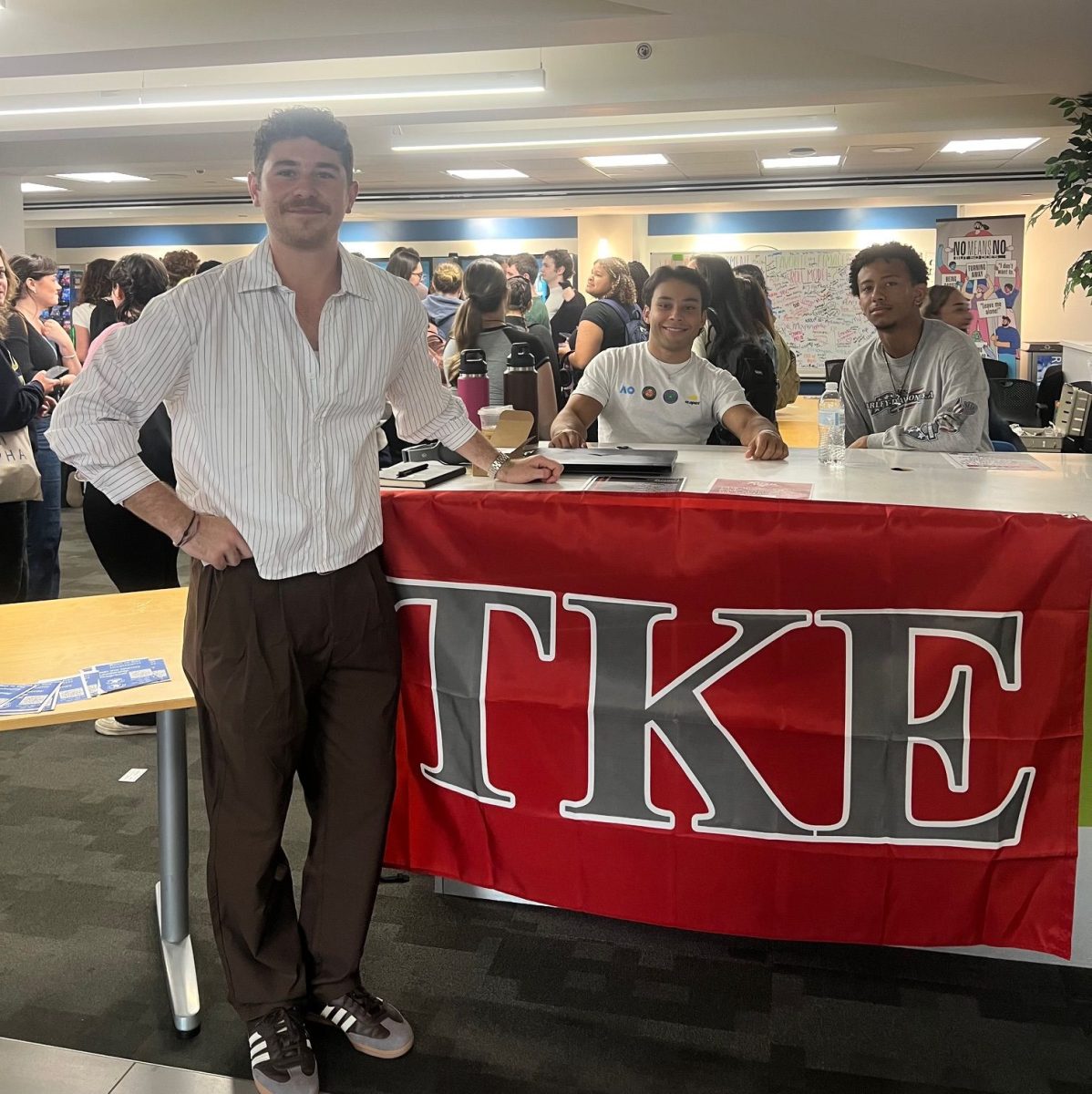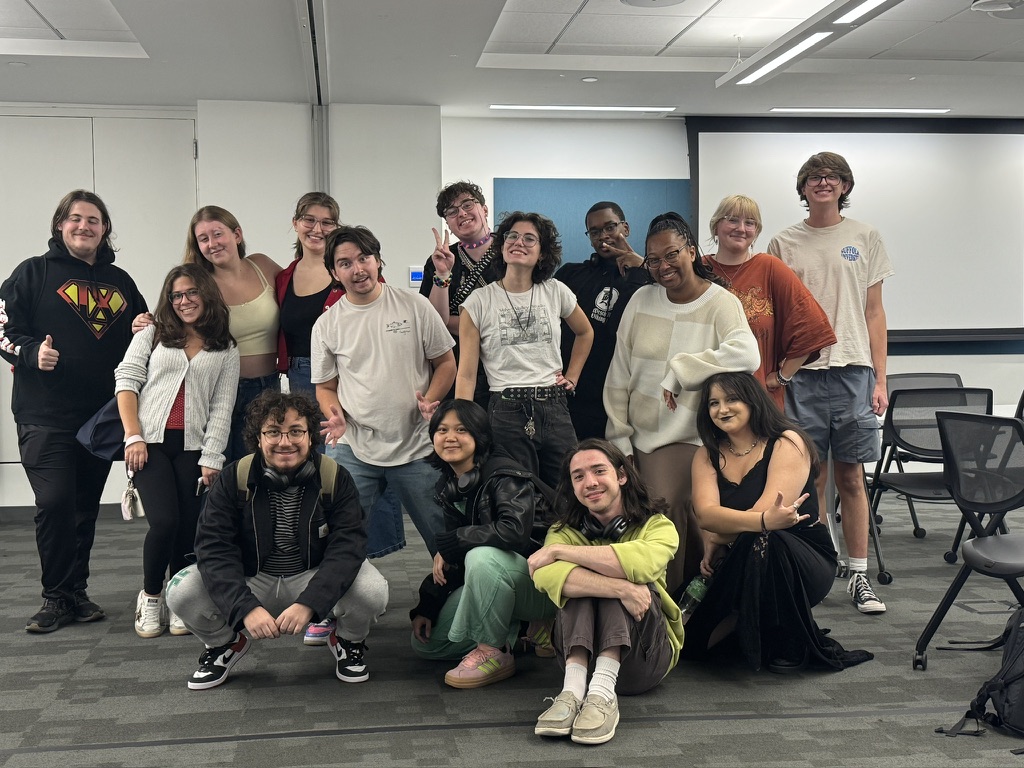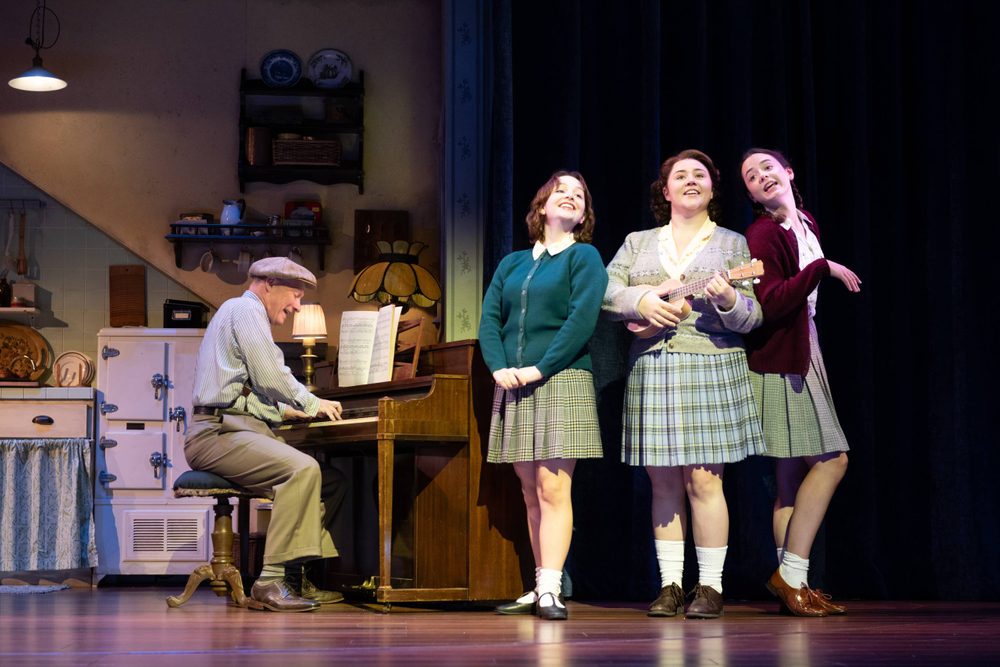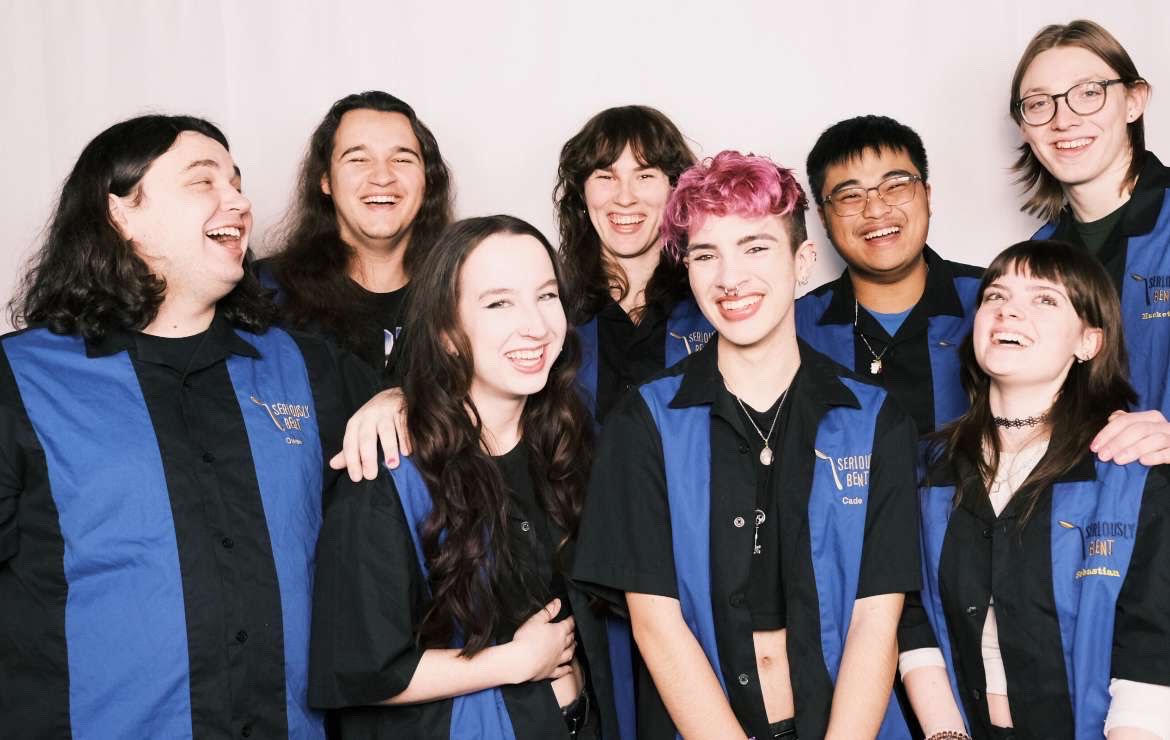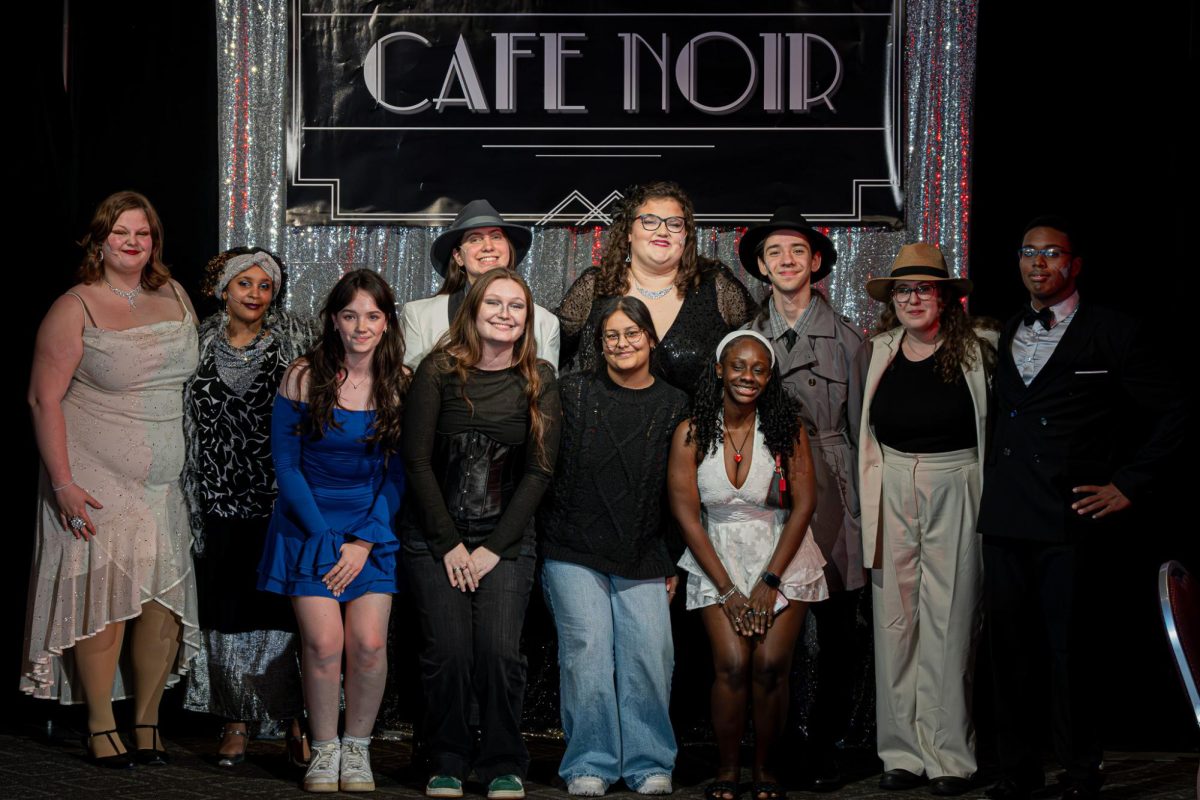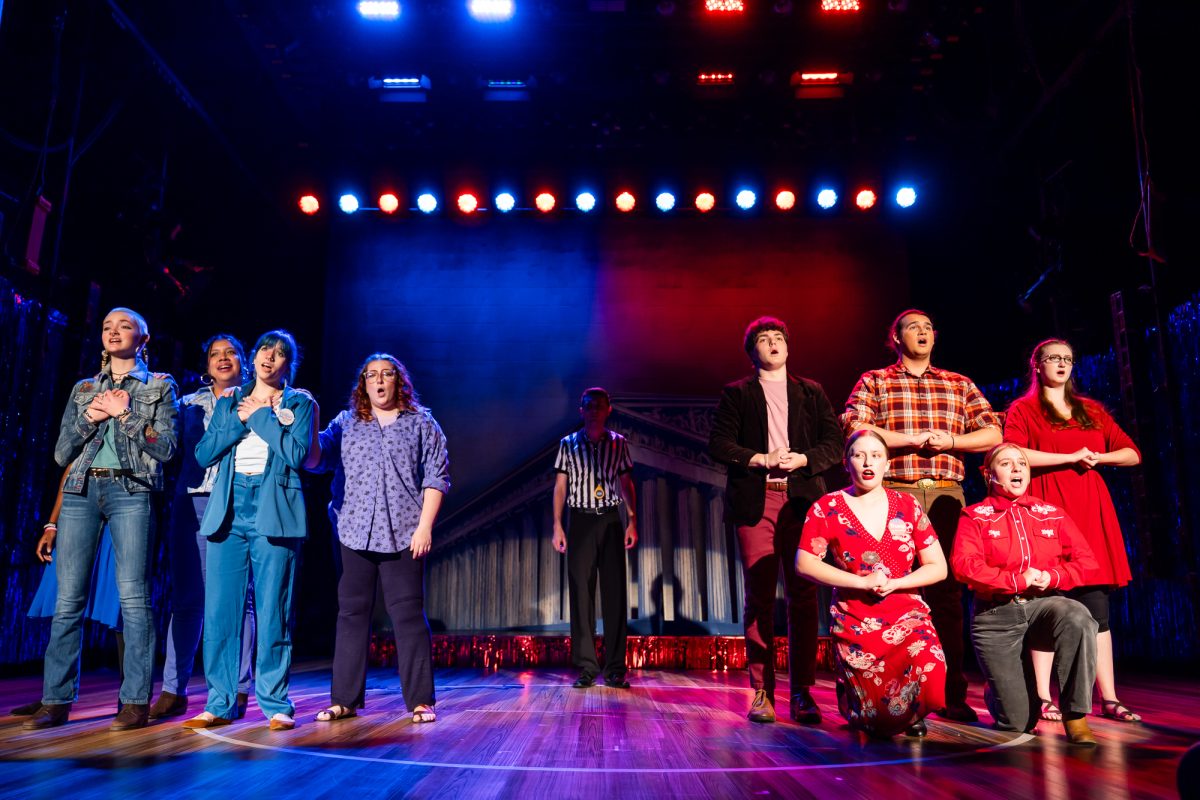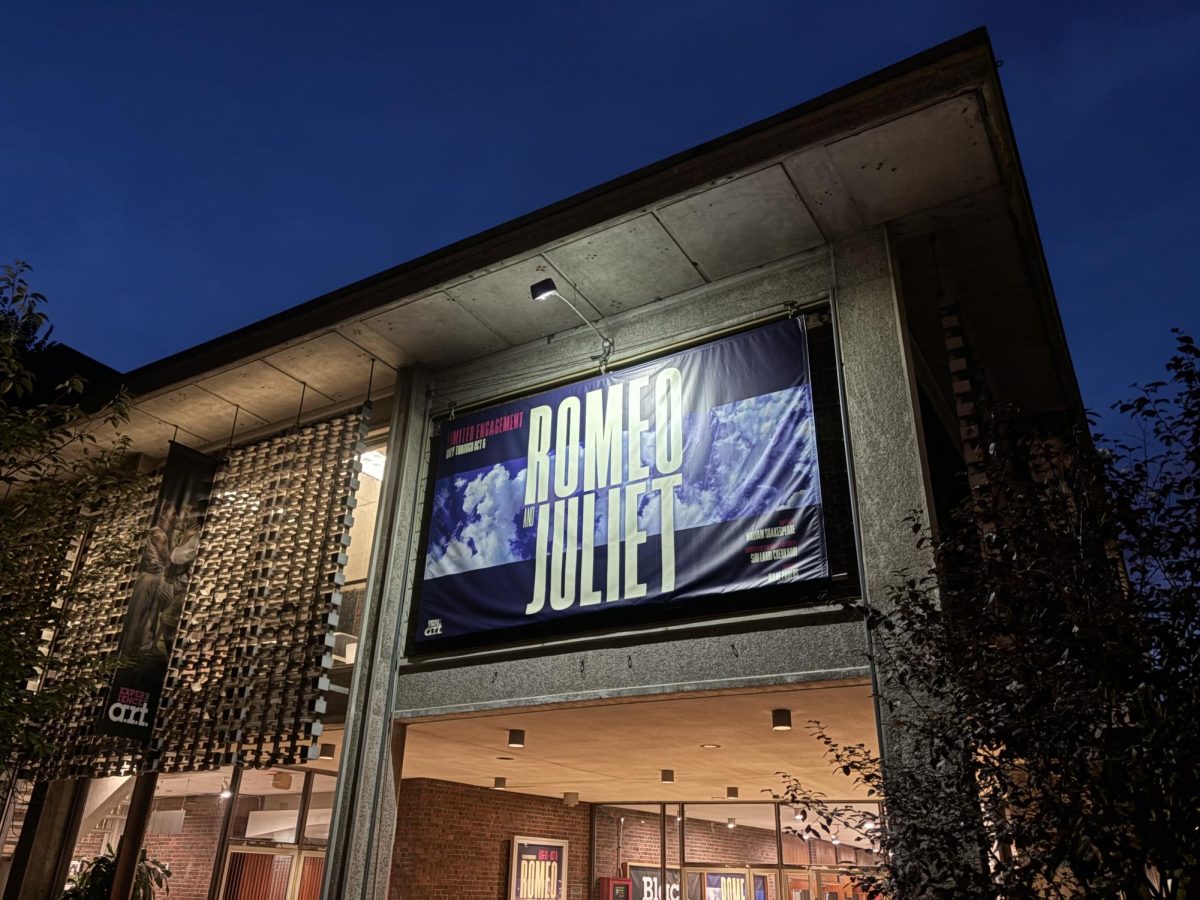Kicking off the spring semester in the Suffolk University theater department was the return of the Spotlight Series, “Title TBA.” The Spotlight series is an entirely student run series showcasing developing work that is written and directed solely by students.
Supposedly, “Title TBA” gained a large amount of buzz from people who wanted to know the actual title instead of attempting to guess the title and the theme of the performance, as well.
The irony of the ‘to be announced’ title was that “TBA” had stuck. Student director Erica Wisor explained, “‘Title TBA’ had posters already made. It became an ongoing joke. It created a lot of attention since people wanted to know what the actual title was but it later became a joke that was in the show as well.”
Wisor wrote and directed the twenty-minute long installment that captivated a full audience. The first installment was brief since it acted as a teaser to the rest of the series. This was in order to let the general audience know what the theater department is up to.
Wisor told The Journal in a post-show interview that had the entire cast more time to meet together, the show would have lasted longer than just twenty minutes rather than the allotted hour and twenty minutes usually designated for the student performances. “The show was cut so short due to rehearsal times, there was only one rehearsal with the full cast,” said Wisor.
Performed at the Sullivan Theatre on the 11th floor of Sawyer, the theme of the show was similar to a circus because a cast member dressed as a ringmaster presented himself along with his crew to signify the start of the show. Every member of the cast was dressed in black clothing from head to toe with bright hues of pink and blue splashed only around the eyes, almost as though the performers had been crying colors.
The atmosphere of the performance was mysterious and strangely welcoming with ominous music vibrating through the speakers. One of the crew members hung back and looked down toward the audience with a focused expression, as though he was in deep thought. As the unnamed man began to talk, he spoke of a woman whom he had had previous relations with, before she left him. While he spun this tale of misfortune, the cast members surrounding him began to act out the story in the form of exaggerated movements as though it was an interpretive dance.
The woman of interest then took the stage, next to the man who was now sitting and waiting for her approval. She inquired if she could practice in front of the man, with loving eyes the man agreed. She then practiced her “set” which consisted of making different sounds directly into the microphone repeatedly, which visibly caused the audience to uncomfortably squirm in their seats. The next and final scene was every character out on the stage. They collectively made the audience laugh with zappy, high energy moments that held the attention of the audience until the very end when the lights blacked out. After muttered musings over whether the show had come to an end, the lights returned and Wisor alerted the crowd that the show had ended.
Although Wisor’s creative abilities were shown through the interpretive dance that encompassed a major part of the show, there was little to no verbal lines which prohibited the development of the story line and was left for the audience to interpret.
The narrative was almost completely light hearted with an earnest undertone and paired with the expressive manner that the characters adopted throughout the show made it endearing to watch. The dance portion was swift and elegant and although there was no obvious structure, every scene flowed in sync with one another to tell a riveting tale of emotion. The manner in which this was conveyed was abstract and thought-provoking.




